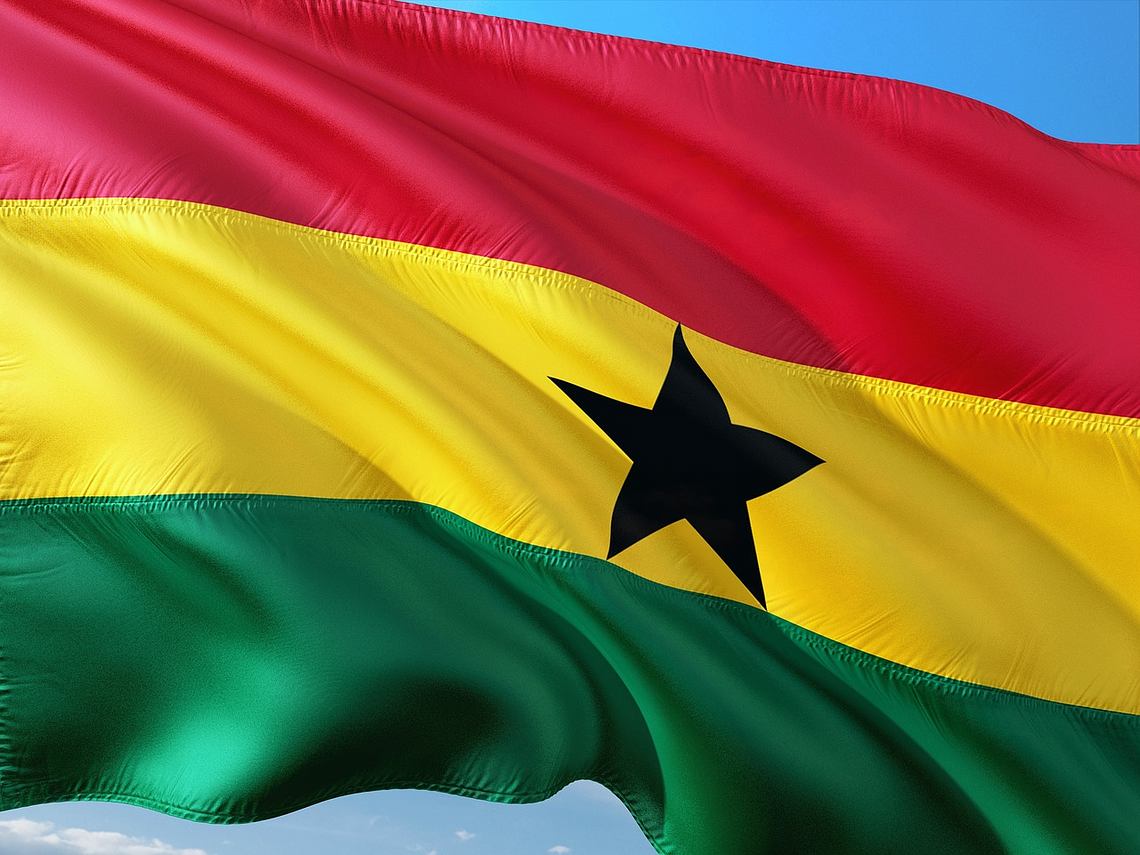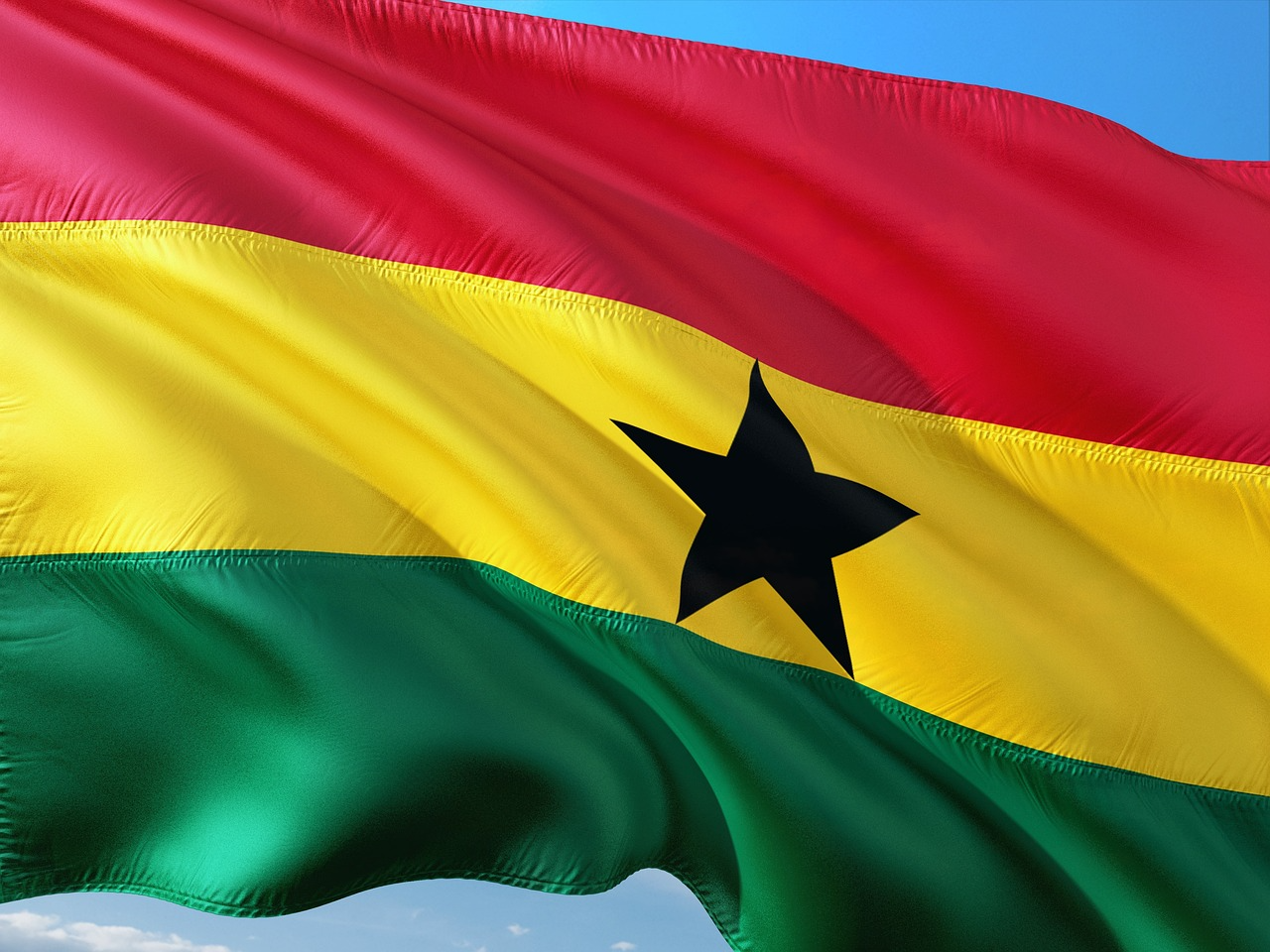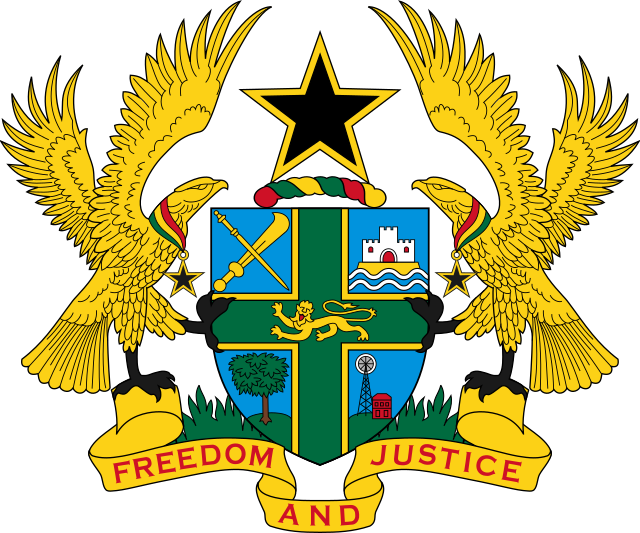The Symbolism and Heritage of the Ghana Flag

Posted on Sat 15 Mar 2025 · by Certified Africa
The Symbolism and Heritage of the Ghana Flag
The flag of Ghana is more than just a national emblem; it is a vibrant tapestry of history, culture, and aspiration. Introduced in 1957, the flag stands as a testament to Ghana's journey toward independence and its enduring spirit of unity and resilience. As we delve into the intricate details of the Ghana flag, we uncover the profound symbolism embedded in its colors and design, reflecting the nation's rich heritage and its hopes for the future.

Historical Context and Adoption
The Birth of a Nation
The Ghana flag was unveiled in 1957, a pivotal year marking Ghana's emergence as the first African nation to gain independence from colonial rule. This event was not just a political milestone but a cultural renaissance, symbolized by the adoption of a new national flag. The flag's introduction was a declaration of sovereignty and a visual representation of a new era for the people of Ghana.
The Influence of Pan-Africanism
The design of the Ghana flag was heavily influenced by the Pan-African movement, which advocated for the solidarity and unity of African nations. The choice of colors—red, gold, and green—echoes the Pan-African palette, signifying a shared identity and common goals among African countries. This connection to Pan-Africanism underscores Ghana's role as a leader in the continent's quest for freedom and self-determination.
Theodosia Okoh: The Visionary Designer
The flag's design was crafted by Theodosia Okoh, a Ghanaian artist whose vision was to create a symbol that encapsulated the spirit of the nation. Her design was not only aesthetically pleasing but also rich in meaning, with each element carefully chosen to reflect Ghana's unique character and aspirations. Okoh's contribution to the national identity of Ghana is celebrated to this day, as her design continues to inspire pride and unity among Ghanaians.
The Symbolism of the Colors
Red: The Blood of Sacrifice
The red stripe on the Ghana flag represents the blood shed by those who fought for the country's independence. This color serves as a poignant reminder of the sacrifices made by countless individuals who laid down their lives for the freedom and dignity of their nation. The red stripe is a symbol of courage, resilience, and the enduring spirit of the Ghanaian people.
Gold: The Wealth of the Land
Gold, positioned in the center of the flag, symbolizes the mineral wealth of Ghana. The country is rich in natural resources, particularly gold, which has played a significant role in its economic development. This color not only highlights Ghana's abundant resources but also signifies prosperity and hope for a bright future.
Green: The Lushness of the Land
The green stripe represents Ghana's lush forests and fertile lands. It reflects the nation's agricultural wealth and its commitment to preserving its natural environment. The green color is a symbol of growth, renewal, and the potential for sustainable development in harmony with nature.
The Black Star: A Beacon of Freedom
At the heart of the Ghana flag is the black star, a powerful emblem of African emancipation and unity. The black star was inspired by the Black Star Line, a shipping company founded by Marcus Garvey, a prominent Pan-Africanist. This symbol represents the guiding light of freedom and the aspirations of the African people to chart their own destiny.
The Evolution of the Flag
The Initial Design and Changes
The original design of the Ghana flag was adopted in 1957 and remained in use until 1962. During this period, the flag underwent a brief change, with the introduction of a white stripe replacing the gold. However, in 1966, the original design was reinstated, reaffirming the nation's commitment to the values and symbolism embodied in the flag.
Influence on Other African Flags
The Ghana flag has served as an inspiration for other African nations seeking to express their identity and aspirations through their national symbols. Its design influenced the flags of countries such as Guinea-Bissau, which adopted similar colors to reflect their own struggles for independence and unity. The Ghana flag's legacy as a symbol of African pride and solidarity continues to resonate across the continent.
The Role of the Flag in National Identity
A Unifying Symbol
The Ghana flag is a powerful unifying symbol that transcends ethnic and cultural differences within the country. It serves as a reminder of the shared history and common goals that bind the people of Ghana together. The flag is a source of national pride, fostering a sense of belonging and collective identity among Ghanaians.
Celebrations and National Events
The flag is prominently displayed during national celebrations and events, such as Independence Day and Republic Day. These occasions provide an opportunity for Ghanaians to come together and celebrate their heritage, achievements, and aspirations. The flag is also raised at international events, representing Ghana on the global stage and reinforcing its identity as a proud and sovereign nation.
The Flag in Everyday Life
In Ghana, the flag is a ubiquitous presence, seen in schools, government buildings, and public spaces. It is a constant reminder of the nation's values and aspirations, inspiring citizens to work towards a brighter future. The flag is also used in various forms of art and fashion, reflecting its significance in Ghanaian culture and society.

The Coat of Arms: Complementing the Flag
Elements of the Coat of Arms
The coat of arms of Ghana complements the flag by incorporating additional symbols of national identity and pride. It features a shield divided into four quarters, each representing a different aspect of Ghana's heritage and aspirations. The coat of arms is supported by two eagles, symbolizing strength and vigilance.
The Sword and Staff
The first quarter of the shield depicts a sword and staff, representing the traditional authority and cultural heritage of Ghana. These symbols highlight the importance of preserving the nation's rich traditions and customs while embracing progress and modernity.
Osu Castle and the Cacao Tree
The second quarter features Osu Castle, a symbol of national governance and leadership. The third quarter showcases a cacao tree, representing Ghana's agricultural wealth and its role as a leading producer of cocoa. These elements reflect the country's economic strengths and its commitment to sustainable development.
The Gold Mine and the Lion
The fourth quarter of the shield depicts a gold mine, symbolizing Ghana's rich mineral resources. The central element of the coat of arms is a lion, representing the nation's enduring ties to the Commonwealth of Nations. These symbols highlight Ghana's potential for growth and prosperity in a global context.
The Black Star and the National Motto
At the top of the coat of arms is the black star, mirroring its presence on the flag. Below the shield is a scroll bearing the national motto, "Freedom and Justice," encapsulating Ghana's core values and aspirations. The coat of arms, like the flag, serves as a powerful symbol of national identity and pride.
The National Anthem: A Call to Unity
The Lyrics and Their Meaning
The national anthem of Ghana, "God Bless Our Homeland Ghana," is a stirring call to unity and patriotism. Its lyrics emphasize the importance of freedom, justice, and national pride, reflecting the values embodied in the flag and coat of arms. The anthem is a source of inspiration and motivation for Ghanaians, reminding them of their shared responsibilities and aspirations.
The Role of the Anthem in National Life
The national anthem is an integral part of Ghanaian life, played at official events, schools, and public gatherings. It serves as a reminder of the nation's history and the sacrifices made by those who fought for independence. The anthem is a unifying force, bringing Ghanaians together in a shared expression of pride and hope for the future.
The Ghana Flag in Contemporary Culture
Representation in Art and Fashion
The Ghana flag is a popular motif in contemporary art and fashion, reflecting its significance in Ghanaian culture. Artists and designers incorporate the flag's colors and symbols into their work, creating pieces that celebrate national identity and pride. The flag's presence in art and fashion serves as a reminder of the nation's rich heritage and its vibrant, dynamic culture.
The Flag in Sports and International Competitions
The Ghana flag is prominently displayed at international sporting events, representing the nation's competitive spirit and dedication to excellence. The national football team, known as the "Black Stars," derives its name from the flag's central emblem. The flag's presence at these events fosters a sense of unity and pride among Ghanaians, both at home and abroad.
The Flag as a Symbol of Resilience
In times of challenge and adversity, the Ghana flag serves as a symbol of resilience and determination. It is a reminder of the nation's ability to overcome obstacles and emerge stronger, united by a shared vision of progress and prosperity. The flag's enduring significance is a testament to the strength and spirit of the Ghanaian people.
Conclusion
The Ghana flag is a powerful symbol of national identity, pride, and aspiration. Its colors and design reflect the nation's history, culture, and values, serving as a constant reminder of the sacrifices made and the dreams yet to be realized. As Ghana continues to grow and evolve, the flag remains a unifying force, inspiring its people to work towards a brighter future. Through its rich symbolism and enduring significance, the Ghana flag stands as a testament to the nation's spirit and resilience, guiding it forward on its journey of progress and prosperity.